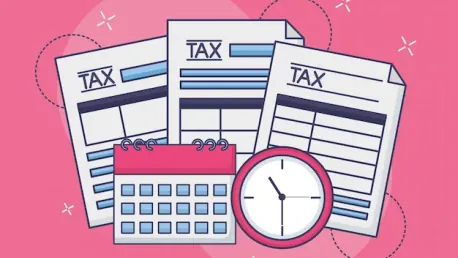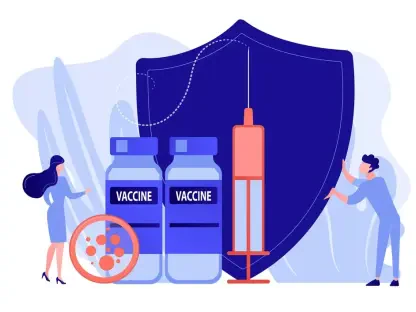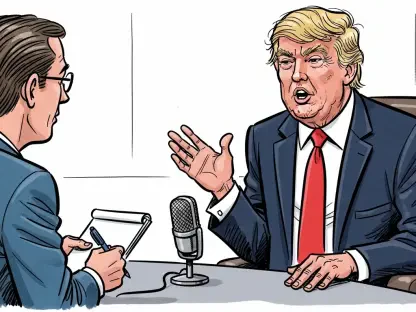Addressing budget shortfalls and implementing tax policy changes are critical challenges for U.S. states in 2025. Lawmakers are pursuing various strategies to address these issues while trying to balance equity and fiscal responsibility. Understanding these diverse and dynamic initiatives offers a glimpse into the fiscal landscape across the nation.
Progressive Measures to Address Budget Shortfalls
In Maryland, the House of Delegates has proposed a progressive budget plan to raise $1 billion in new revenue to address a significant $3 billion deficit. This plan includes introducing new tax brackets for high earners, implementing a capital gains tax, expanding sales tax to data and IT services, and increasing taxes on sports betting and cannabis sales. The goal is to generate revenue from wealthier individuals and specific industries, thus avoiding the imposition of a heavier burden on low- and middle-income residents. By targeting these areas, Maryland aims to create a more balanced fiscal approach, ensuring that wealthier citizens contribute a fair share towards the state’s economic stability.
Similarly, Washington state is focused on generating revenue from high-income households. Legislative leaders are considering a range of measures, including a new tax on financial assets over $50 million, payroll taxes for higher-income earners, the removal of certain tax preferences, allowing property taxes to grow beyond the current cap, and reducing the state sales tax. Additionally, both legislative houses are contemplating gas tax increases to address the transportation budget shortfall. By shifting a more significant portion of the tax burden towards high-income earners and specific financial assets, Washington state aims to balance its budget while investing in critical areas such as infrastructure and social services.
Supporting Middle and Low-Income Families
In New Mexico, significant strides have been made to support middle- and low-income families through a revamped refundable tax credit system. Legislators agreed to replace the Working Families Tax Credit with a state Earned Income Tax Credit (EITC), expanding eligibility and boosting the rate from 25% to 34% of the federal credit. This adjustment aims to increase financial support for working families, helping to reduce poverty and economic inequality. Additional measures include raising liquor taxes to fund tribal alcohol alleviation programs, creating credits for foster parents and guardians, and removing medical services from the gross receipts tax. These combined efforts are designed to provide a more inclusive fiscal approach, ensuring that those in need receive adequate support.
However, while a proposed oil tax to fund these initiatives was ultimately dropped, legislators agreed to allocate $113 million from the reserves to support these first-year cuts. This decision reflects a pragmatic approach to addressing budget shortfalls while ensuring that essential services and support systems remain intact. The combination of targeted tax credits and strategic reserve allocations highlights New Mexico’s commitment to fostering economic stability and equity. By focusing on the needs of middle- and low-income families, the state aims to create a more balanced and equitable economic environment.
Controversial Tax Cut Proposals
South Carolina is navigating controversy surrounding proposed income tax cuts. Governor Henry McMaster and GOP leaders have announced plans to reduce the state’s personal income tax rates by collapsing the current brackets into a flat 3.99% rate, with the potential to decrease further to 2.49%. Critics argue that such significant cuts could lead to a $2.7 billion revenue loss, potentially undermining the state’s ability to fund essential services and infrastructure projects. Proponents, however, contend that the tax cuts would stimulate economic growth and attract new businesses, ultimately boosting the state’s economy. The debate highlights the tension between fiscal responsibility and economic stimulation, with both sides presenting compelling arguments for their positions.
Mississippi recently faced complications with a legislative effort to phase out the state’s personal income tax. A compromise bill containing typographical errors was inadvertently approved, risking the rapid elimination of the tax. While the House initially approved the bill, negotiations are expected to restart, with potential implications for the Public Employees Retirement System. This legislative mishap underscores the complexities involved in tax policy changes and the potential for unforeseen consequences. As lawmakers work to rectify the situation, the incident serves as a reminder of the importance of careful planning and attention to detail in fiscal legislation. The ongoing discussions in Mississippi reflect broader debates about the role of income taxes and the impact of their potential elimination on state revenue and public services.
Targeted Tax Updates
In both North Dakota and Washington state, lawmakers are considering updates to gas taxes to fund critical infrastructure projects. North Dakota’s proposal includes a 3-cent per gallon increase and higher electric vehicle registration fees, projected to generate $42 million biennially for local roads. This approach aims to ensure that the state’s transportation infrastructure receives adequate funding while addressing the growing impact of electric vehicles on fuel tax revenue. By balancing the needs of traditional and emerging transportation modes, North Dakota seeks to create a sustainable fiscal framework for its infrastructure development.
In Washington state, similar measures are under consideration, with lawmakers exploring potential increases in gas taxes to support the transportation budget. These updates are part of broader efforts to address infrastructure funding shortfalls and ensure the state’s transportation network remains robust. By targeting specific areas for tax updates, both states aim to balance revenue generation with the need for continued investment in critical infrastructure. These initiatives reflect a pragmatic approach to fiscal policy, recognizing the importance of maintaining and improving essential services while addressing budget challenges.
Addressing Property Tax and Other Issues
Georgia is addressing concerns about property tax valuation caps implemented last year by considering another round of local referendums in 2027. These referendums will allow municipalities to decide whether to continue with the opt-out provision, which has sparked ongoing debates about equitable property tax assessments. The reconsideration comes in response to calls for a more balanced approach to property tax valuation, ensuring that assessments remain fair and reflect current market conditions. By involving local communities in the decision-making process, Georgia aims to foster greater transparency and accountability in property tax policies.
In Iowa, the legislature is discussing a proposal to cap state property taxes used to fund schools, with initial backfilling of revenue for local governments. This approach seeks to address concerns about rising property tax burdens while ensuring that public education funding remains stable. The proposal reflects a careful balancing act between providing property tax relief and maintaining essential public services. By capping property tax growth and offering initial financial support to local governments, Iowa aims to create a sustainable and equitable fiscal framework for funding public education.
Diverse Legislative Actions
In Missouri, a debate has emerged over increasing tax credits for donations to anti-abortion centers, with proponents arguing that such measures support critical services, while opponents criticize the high return rates exceeding 100%. This contentious issue highlights the broader challenges of balancing fiscal incentives with public policy objectives. The discussion reflects broader ideological divides and the complexities of using tax policy to achieve social goals. As lawmakers navigate these debates, the outcomes will have significant implications for both public finance and social services in the state.
Tennessee is advancing a bill to tax vaping products, a move that reflects a growing trend to regulate and tax emerging industries. By imposing taxes on vaping products, the state aims to control consumption while generating additional revenue. This legislative move aligns with broader public health initiatives and reflects a pragmatic approach to addressing new market trends. As Tennessee leads the way, other states may follow suit, recognizing the potential benefits of regulating and taxing emerging industries. The outcome of this legislation will be closely watched, with significant implications for both public health and state revenue.
Ideological Contests and Consensus Views
The legislative initiatives reflect ongoing ideological contests between progressive policies targeting higher earners and conservative tax cuts aimed at broader economic stimulation. Progressive measures, such as those seen in Maryland and Washington, are lauded for their focus on equity and their attempts to balance revenue generation with social responsibility. By targeting high earners and specific industries, these policies aim to create a fairer tax system that supports essential public services without placing undue burdens on low- and middle-income residents.
Conversely, conservative approaches, exemplified by proposals in South Carolina and Mississippi, prioritize broad-based tax cuts and economic stimulation. Proponents argue that reducing tax rates can spur economic growth, attract businesses, and ultimately lead to increased state revenue. However, critics contend that such measures risk significant revenue shortfalls, potentially undermining the state’s ability to fund essential services. The debate highlights the broader ideological divide between fiscal responsibility and economic growth, with both sides presenting compelling arguments for their respective positions.
Key Takeaways and Future Considerations
Addressing budget shortfalls and implementing tax policy changes are critical challenges for U.S. states in 2025. These financial hurdles demand attention and innovative solutions from state governments. Lawmakers are actively pursuing a range of strategies to mitigate fiscal imbalances while trying to maintain equity and fiscal responsibility. Some states are considering adjustments in income taxes, sales taxes, and other revenue-generating measures. Additionally, there are discussions around cutting expenditures in non-essential areas to better align with available resources. These efforts reflect a concerted attempt to ensure that funding for vital public services, such as healthcare and education, remains intact. Every state’s approach differs, reflecting its unique economic conditions and political climate. Understanding these diverse and dynamic initiatives offers a glimpse into the fiscal landscape across the nation. By evaluating what works best in various contexts, other states can adapt successful policies to their own circumstances, aiming for a more balanced and sustainable financial future.









